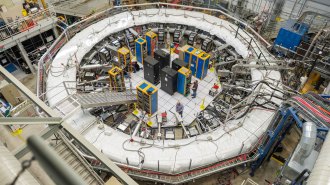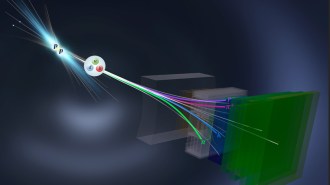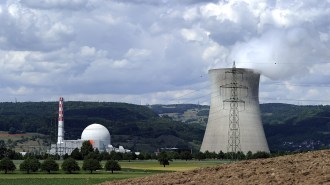Physicists measured Earth’s mass using neutrinos for the first time
The tiny particles provide an independent test of some of the planet’s key properties

PARTICLE PROBES Subatomic particles called neutrinos are created when spacefaring protons and other particles smash into Earth’s atmosphere (illustrated). Scientists have now used neutrinos to measure the Earth’s mass and the densities of its layers.
Earth: Reto Stöckli, Nazmi El Saleous and Marit Jentoft-Nilsen/GSFC/NASA, adapted by E. Otwell







